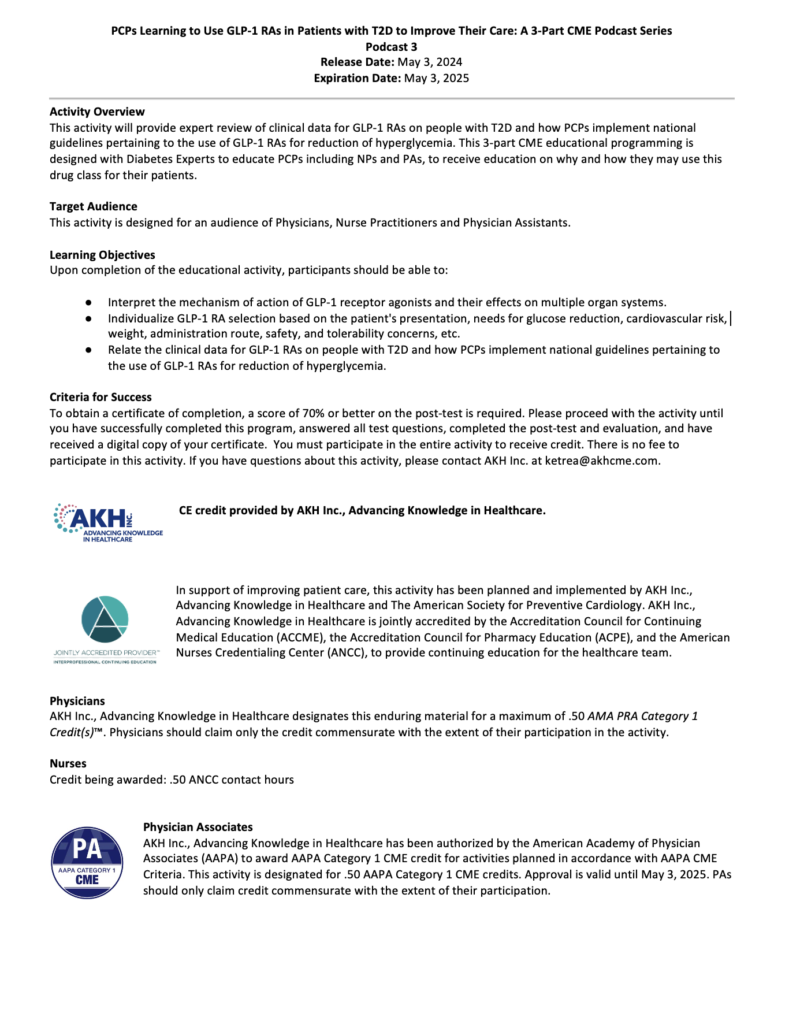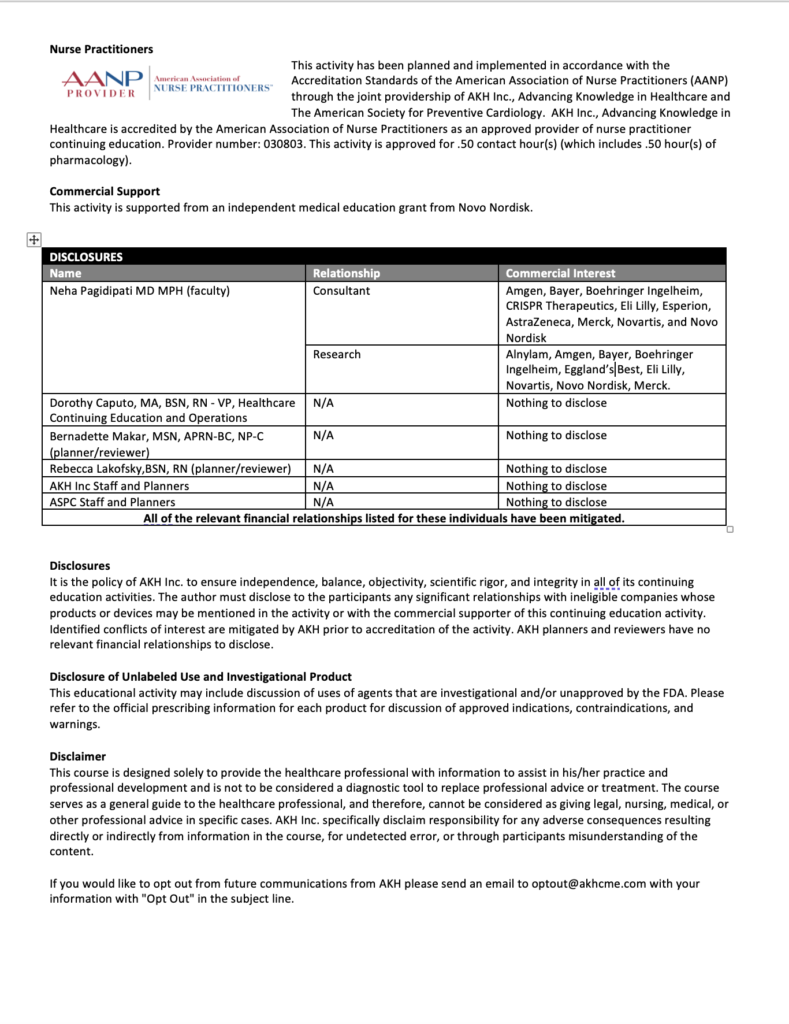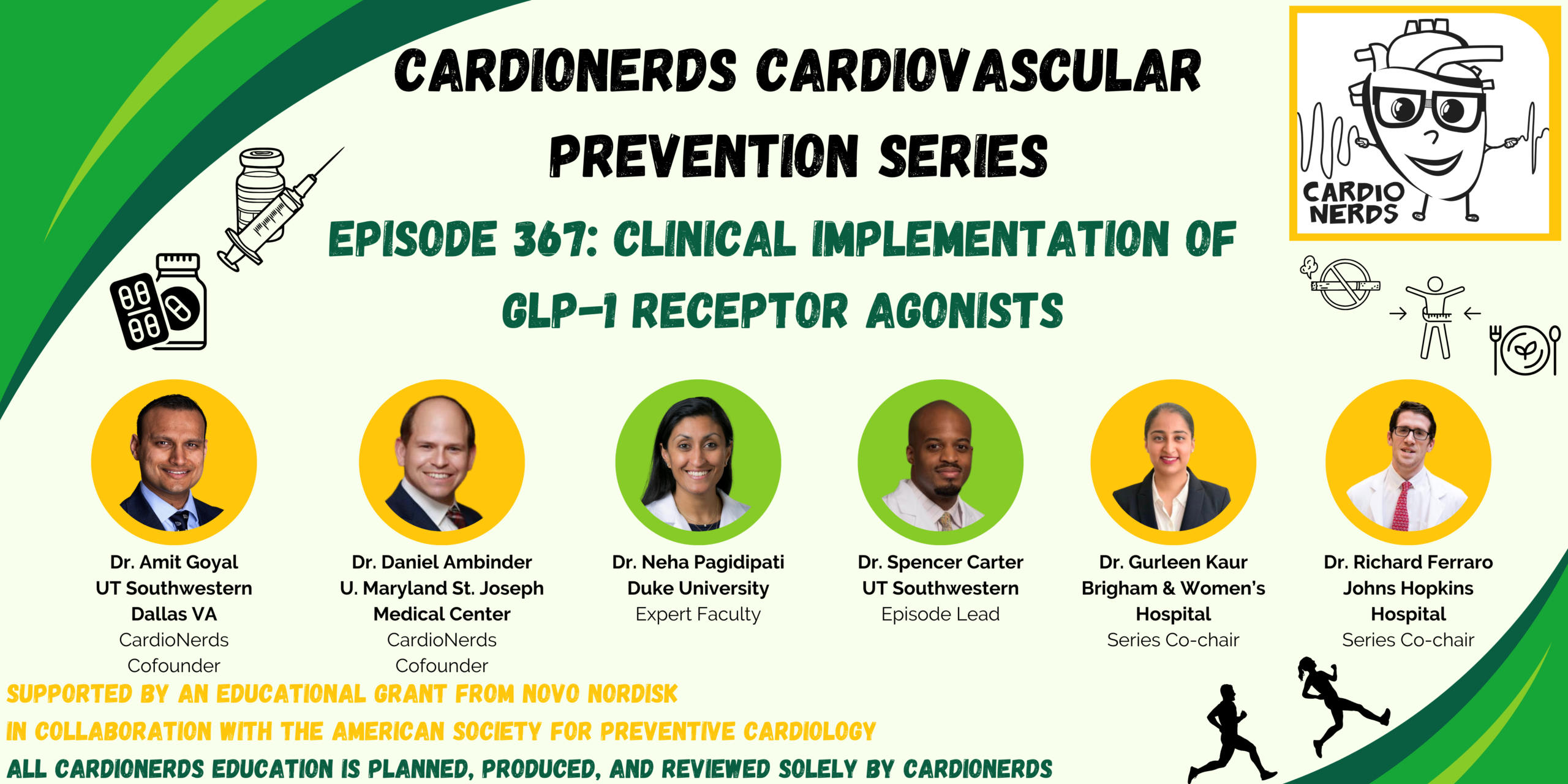
367. GLP-1 Agonists: Clinical Implementation of GLP-1 Receptor Agonists with Dr. Neha Pagidapati
Cardionerds: A Cardiology Podcast
Clinical Implementation of GLP-1 Receptor Agonists
This chapter covers medication titration, side effects management, and differences between GLP-1 agonists. It also discusses the impact of telemedicine on patient follow-ups and highlights challenges related to access and cost disparities among racial and socioeconomic groups.


CardioNerds (Drs. Gurleen Kaur and Richard Ferraro) and episode FIT Lead Dr. Spencer Carter (Cardiology Fellow at UT Southwestern) discuss the clinical implementation of GLP-1 receptor agonists with Dr. Neha Pagidapati (Faculty at Duke University School of Medicine). In this episode of the CardioNerds Cardiovascular Prevention Series, we discuss the clinical implementation of glucagon-like peptide-1 (GLP-1) receptor agonists. We cover the clinical indications, metabolic and cardiovascular benefits, and potential limitations of these emerging and exciting therapies. Show notes were drafted by Dr. Spencer Carter. Audio editing was performed by CardioNerds Academy Intern, student Dr. Pacey Wetstein.
This episode was produced in collaboration with the American Society of Preventive Cardiology (ASPC) with independent medical education grant support from Novo Nordisk. See below for continuing medical education credit.
Claim CME for this episode HERE.
US Cardiology Review is now the official journal of CardioNerds! Submit your manuscript here.

Pearls and Quotes – Clinical Implementation of GLP-1 Receptor Agonists
- GLP-1 agonists work through a variety of mechanisms to counteract metabolic disease. They increase insulin secretion, inhibit glucagon secretion, slow gastric motility, and increase satiety to limit excess energy intake.
- Patients with type II diabetes and an elevated risk for atherosclerotic cardiovascular disease should be considered for GLP-1 agonist therapy regardless of hemoglobin A1c.
- GLP-1 agonists offer significant ASCVD risk reduction even in the absence of diabetes. Newer data suggest a significant reduction in cardiovascular events with GLP-1 agonist therapy in patients who are overweight or obese and have a prior history of heart disease.
- GLP-1 agonists should generally be avoided in patients with a history of medullary thyroid cancer or MEN2. As these medications slow gastric emptying, relative contraindications include history of recurrent pancreatitis and gastroparesis.
- GLP-1 agonists should be initially prescribed at the lowest dose and slowly uptitrated to avoid gastrointestinal side effects.
Show notes – Clinical Implementation of GLP-1 Receptor Agonists
What were the groundbreaking findings of the STEP1 and SURMOUNT-1 trials and how these impact cardiovascular wellness?
- The STEP1 and SURMOUNT trials demonstrated sustained clinically relevant reduction in body weight with semaglutide and tripeptide, respectively, in patients with overweight and obesity. As obesity is an important risk factor for the development of cardiovascular disease, weight reduction meaningfully contributes to cardiovascular wellness.
What were the findings of the LEADER trial and their implications for patients with type II diabetes and high cardiovascular risk?
- The LEADER trial demonstrated a significant reduction in the rate of cardiovascular death, nonfatal MI, or nonfatal stroke in patients with type II diabetes treated with liraglutide. GLP-1 receptor agonist therapy should be considered in all patients with type II diabetes and elevated ASCVD risk regardless of A1c or current hyperglycemic therapy.
What are current indications for GLP1 agonists in the context of cardiometabolic disease.
- GLP-1 receptor agonists should be considered in patients with type II diabetes and high ASCVD risk OR patients without diabetes who are overweight/obese and have a history of cardiovascular disease.
What are important side effects or contraindications to GLP1 agents when used for cardiovascular risk reduction and wellness?
- GLP-1 receptor agonists should be avoided in patients with a history of medullary thyroid cancer or MEN2. Relative contraindications include recurrent pancreatitis, gastroparesis, or ongoing unexplained gastrointestinal symptoms.
What are practical concerns associated with GLP-1 use, and how can these be overcome?
- Affordability and availability remain the leading practical limitations for GLP-1 receptor agonist therapies. Many insurance companies will cover semaglutide and tirzepatide for patients with diabetes. Obtaining coverage may be difficult otherwise, but this is an evolving field as more clinical trial data emerge. Beware of unauthentic/alternate formulations of these medications, as they tend not to be FDA-regulated and can pose health risks. Some patients express concern about injectable therapies, but GLP-1 injectors are typically very well tolerated and easy to use.
References – Clinical Implementation of GLP-1 Receptor Agonists
- Brown, E., Heerspink, H. J., Cuthbertson, D. J., & Wilding, J. P. (2021). SGLT2 inhibitors and GLP-1 receptor agonists: established and emerging indications. The Lancet, 398(10296), 262-276.
- https://www.sciencedirect.com/science/article/pii/S0140673621005365
- Wilding, J. P., Batterham, R. L., Calanna, S., Davies, M., Van Gaal, L. F., Lingvay, I., … & Kushner, R. F. (2021). Once-weekly semaglutide in adults with overweight or obesity. New England Journal of Medicine.
- https://www.nejm.org/doi/full/10.1056/NEJMoa2032183
- Müller, T. D., Blüher, M., Tschöp, M. H., & DiMarchi, R. D. (2022). Anti-obesity drug discovery: advances and challenges. Nature Reviews Drug Discovery, 21(3), 201-223.
- https://www.nature.com/articles/s41573-021-00337-8
- Jastreboff, A. M., Aronne, L. J., Ahmad, N. N., Wharton, S., Connery, L., Alves, B., … & Stefanski, A. (2022). Tirzepatide once weekly for the treatment of obesity. New England Journal of Medicine, 387(3), 205-216.
- https://www.nejm.org/doi/full/10.1056/NEJMoa2206038
- Lincoff, M, Brown-Frandsen K, Colhoun H, et al. Semaglutide and Cardiovascular Outcomes in Obesity without Diabetes. (2023). 389(24):2221-2232.
- https://www.nejm.org/doi/full/10.1056/NEJMoa2307563
- Eberly, L, Yang L, Essien U, et al. (2021). Racial, ethnic, and socioeconomic inequities in glucagon-like-peptide-1 receptor agonist use among patients with diabetes in the US; 2(12):e214182.
- https://www.ncbi.nlm.nih.gov/pmc/articles/PMC8796881/




